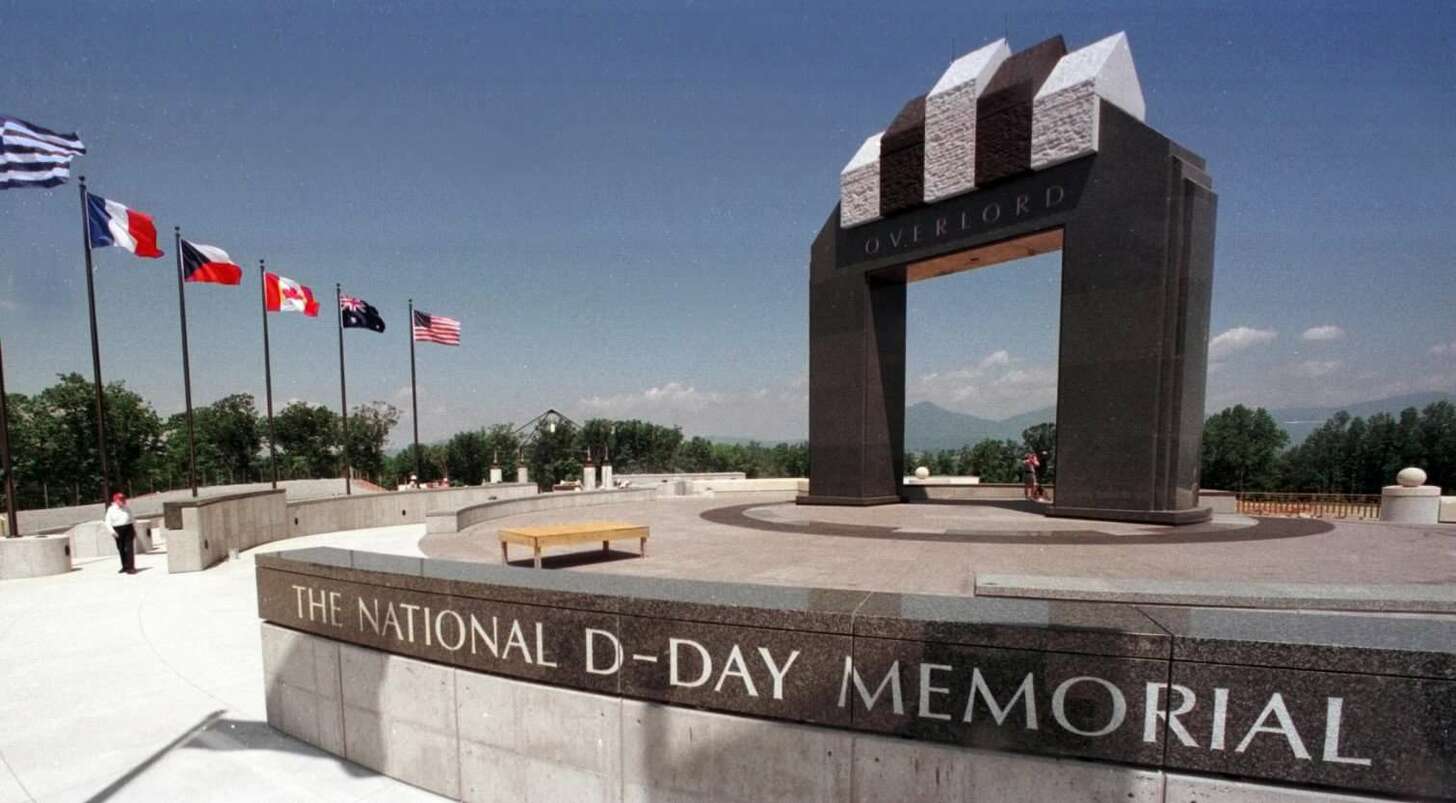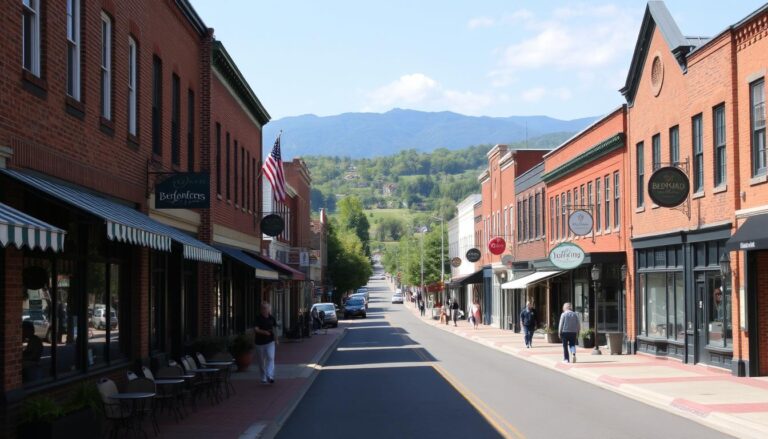Discover and Explore the D-Day Memorial in Bedford, Virginia: A Tribute to WWII Heroes
Standing as a solemn tribute to the courage and sacrifice of Allied forces, the National D-Day Memorial in Bedford, Virginia, tells one of history’s most pivotal stories. This remarkable memorial honors the valor of those who participated in the Normandy invasion on June 6, 1944 – a day that changed the course of World War II and world history. Bedford’s memorial doesn’t just commemorate an event; it preserves the legacy of ordinary Americans who performed extraordinary acts of bravery on distant shores.
The National D-Day Memorial stands as a powerful tribute to the Allied forces who stormed the beaches of Normandy
Why Bedford? The Memorial’s Profound Connection
Bedford, Virginia, a small town nestled in the foothills of the Blue Ridge Mountains, bears a unique and heartbreaking distinction. With a population of just 3,200 in 1944, Bedford suffered the highest per capita D-Day losses of any American community. The town lost 19 young men from the Bedford-based Company A, 116th Infantry Regiment, 29th Division within the first minutes of the Normandy invasion, plus another Bedford native serving in a different company.
These men, known as “The Bedford Boys,” represented an extraordinary sacrifice from one small community. Their story embodies the tremendous cost of freedom and serves as the foundation for why this national memorial stands in Bedford rather than a larger city or on the actual battlefield.
“You have raised a fitting memorial to D-Day, and you have put it in just the right place — not on a battlefield of war, but in a small Virginia town, a place like so many others that were home to the men and women who helped liberate a continent.”
D-Day: The Turning Point of World War II
On June 6, 1944, more than 150,000 Allied troops crossed the English Channel to storm the beaches of Nazi-occupied Normandy, France. This massive amphibious assault, codenamed “Operation Overlord,” was supported by thousands of ships, aircraft, and paratroopers in what remains the largest seaborne invasion in history.
The operation faced fierce German resistance, resulting in thousands of Allied casualties. Despite these losses, the invasion succeeded in establishing a foothold in Western Europe, beginning the long campaign that would eventually lead to Nazi Germany’s defeat. D-Day is widely considered one of the major turning points of World War II, marking the start of the liberation of Western Europe from Nazi control.
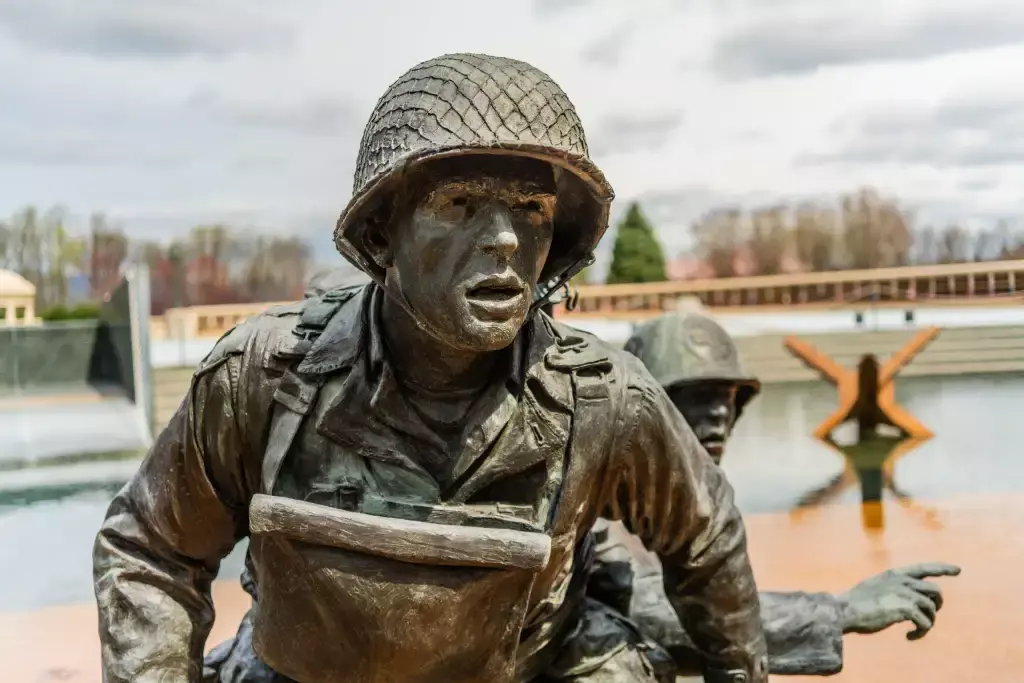
Bronze sculptures at the memorial depict soldiers storming the beaches of Normandy
Key Features of the National D-Day Memorial
The Overlord Arch
Standing 44 feet, 6 inches tall (symbolizing the date 6/6/44), this impressive structure is the memorial’s centerpiece. Named after the D-Day operation’s codename, the arch overlooks the main plaza and serves as the memorial’s most recognizable feature.
The Beach Tableau
A powerful recreation of Omaha Beach with bronze sculptures of soldiers struggling through obstacles under enemy fire. Water jets simulate bullet strikes in the reflecting pool, creating a visceral representation of the landing conditions.
Wall of Names
Bronze plaques bear the names of more than 4,400 Allied service members who died on D-Day. The memorial foundation continues researching casualties, regularly adding newly verified names to this solemn tribute.
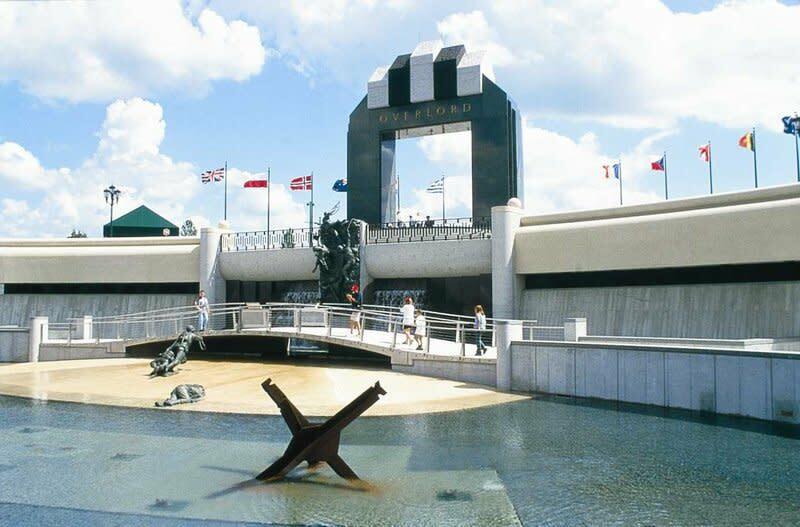
The Overlord Arch stands as the memorial’s signature monument, representing Operation Overlord
Additional Memorial Elements
- English Garden featuring a statue of General Dwight Eisenhower and busts of other key invasion figures
- Liberation Plaza representing the freedom brought to France beyond Normandy’s beaches
- Sculpture garden with various monuments honoring different military units
- Education center with rotating exhibits of D-Day artifacts
- Reynolds Garden with a reflecting pool and meditation area
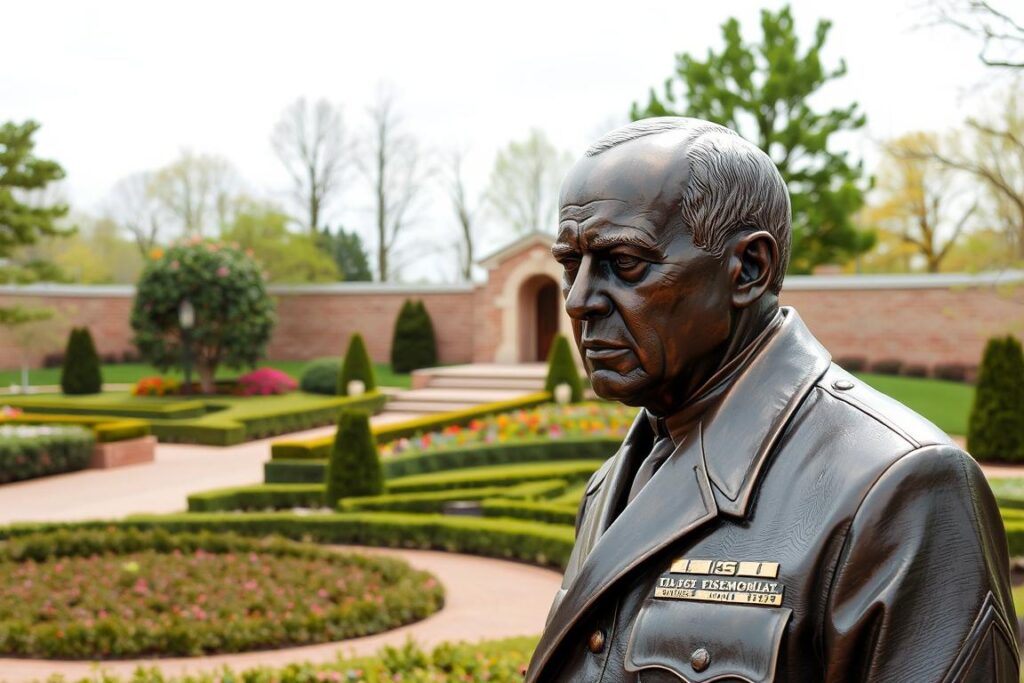
Bronze statue of General Eisenhower in the memorial’s English GardenGuided tours provide visitors with detailed insights into the memorial’s significance
Guided Tours and Educational Programs
The memorial offers guided tours led by knowledgeable staff who share detailed accounts of D-Day and the memorial’s significance. These tours provide context that brings the static displays to life, helping visitors understand the scale and importance of the Normandy invasion.
Educational programs cater to various age groups, with special curriculum-based tours for school groups. The memorial also hosts workshops, lectures, and special events throughout the year to deepen public understanding of World War II history.Special Events and Commemorations
The memorial hosts several annual events, including:
- D-Day Anniversary Commemoration (June 6)
- Memorial Day and Veterans Day ceremonies
- “Flames of Memory” during the holiday season
- Living history weekends with WWII reenactors
- Veterans gatherings and recognition ceremonies

The annual D-Day anniversary commemoration brings together veterans, families, and visitors
Personal Stories: The Human Face of Sacrifice
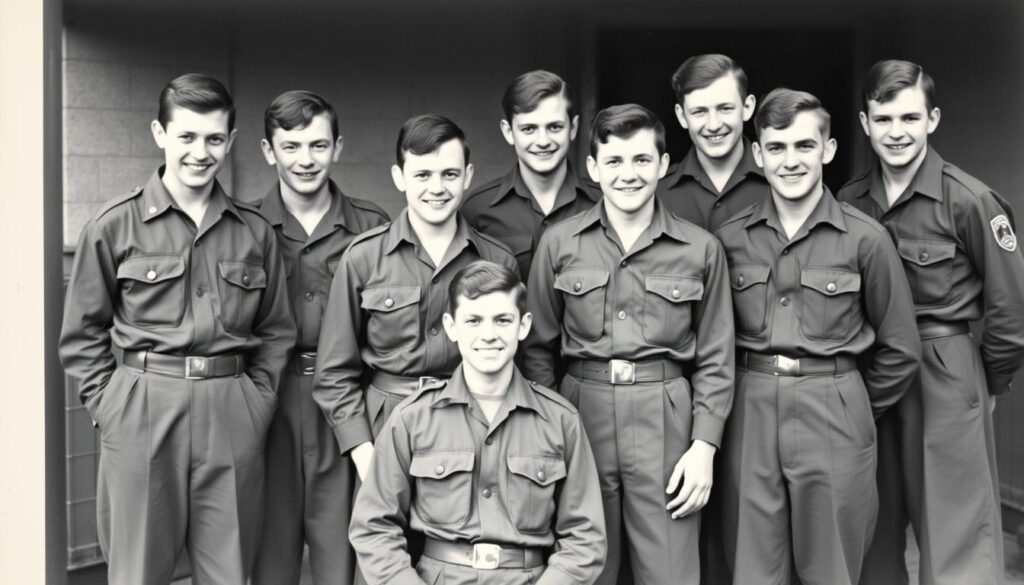
The “Bedford Boys” before their deployment to Europe
The Bedford Boys
The story of Bedford’s loss is perhaps best illustrated through the experiences of Bedford natives like Raymond and Bedford Hoback, brothers who served together in Company A. Their mother received both death notices within hours of each other. Bedford died on the beach, while Raymond’s body was never recovered.
Roy Stevens survived the landing while his twin brother Ray was killed. In the chaos of the invasion, Roy didn’t learn of his brother’s death until weeks later. These personal connections make the memorial not just a monument to a military operation, but a testament to the human cost of war.
“I watched my buddies die on D-Day. I can’t go on without making some effort to preserve their memories.”
Preserving Veterans’ Voices
When the memorial was dedicated in 2001, there were more than 5 million surviving American WWII veterans. Today, fewer than 120,000 remain. The memorial has adapted its educational approach, incorporating technology to preserve firsthand accounts through oral histories, digital exhibits, and its podcast “Someone Talked!” which features interviews with historians and authors about World War II.
Plan Your Visit: Practical Information
Hours & Admission
- Open daily 10 AM – 5 PM
- Closed on Thanksgiving, December 24-25, and January 1
- Adults: $12
- Seniors (65+) & Military: $10
- Students (6-18): $7
- Children under 6: Free
- WWII Veterans: Free
Facilities
- Free parking
- Gift shop with books, apparel, and memorabilia
- Wheelchair accessibility throughout most areas
- Restrooms
- Water fountains
- Limited food options (vending machines)
- Picnic areas available
Tips for Visitors
- Allow 2-3 hours for a complete visit
- Wear comfortable shoes for walking
- Check weather forecast (much of the memorial is outdoors)
- Consider guided tour for enhanced experience
- Visit early morning or late afternoon to avoid crowds
- Bring water during summer months
- Photography is permitted
The National D-Day Memorial is located at 3 Overlord Circle, Bedford, VA 24523
Plan Your Visit Today
Honor the sacrifice of D-Day veterans with a visit to this powerful memorial.
Enhance Your Trip: Nearby Attractions
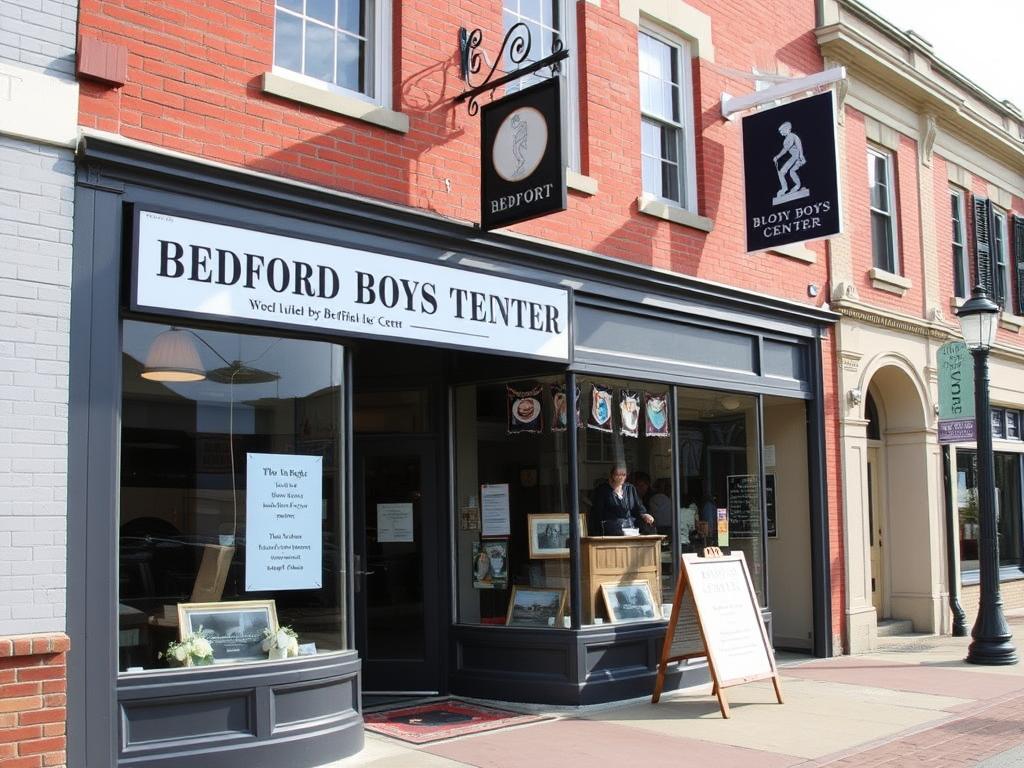
Bedford Boys Tribute Center
Bedford Boys Tribute Center
Located in downtown Bedford inside Green’s Drugstore, this museum focuses specifically on the local soldiers who perished on D-Day. The center displays personal items, photographs, and stories of the Bedford Boys, offering a more intimate look at the individuals behind the statistics.

Blue Ridge Parkway
Blue Ridge Parkway
Just a short drive from Bedford, the Blue Ridge Parkway offers some of America’s most spectacular scenery. Known as “America’s Favorite Drive,” this 469-mile scenic road connects Shenandoah National Park to Great Smoky Mountains National Park, with numerous overlooks, hiking trails, and picnic areas.

Peaks of Otter
Peaks of Otter
This scenic area features three mountain peaks, a lodge, restaurant, campground, and hiking trails. Abbott Lake offers fishing and beautiful reflections of the surrounding mountains. The area’s natural beauty provides a peaceful complement to the solemnity of the D-Day Memorial.
Supporting the National D-Day Memorial
Unlike many national memorials, the National D-Day Memorial receives no federal, state, or local government funding. It relies entirely on admission fees, donations, and the support of individuals and organizations who believe in preserving this important piece of history.
Ways to Support
- Become a member of the National D-Day Memorial Foundation
- Make a one-time or recurring donation
- Volunteer your time and talents
- Participate in fundraising events
- Purchase memorial bricks to honor veterans
- Include the memorial in your estate planning
- Sponsor educational programs
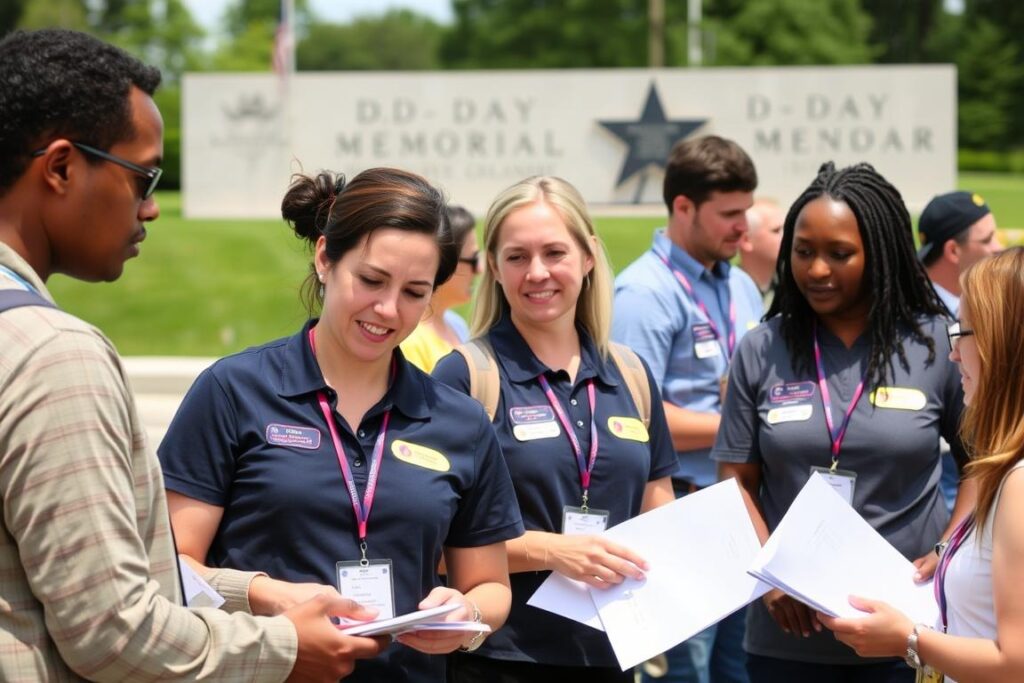
Volunteers play a crucial role in the memorial’s operations
Help Preserve This Important Legacy
Your support ensures that the stories and sacrifices of D-Day veterans continue to educate and inspire future generations.
Honoring Sacrifice, Preserving History
The National D-Day Memorial in Bedford, Virginia stands as more than just a collection of monuments and plaques. It represents America’s enduring gratitude to those who fought and died for freedom on the beaches of Normandy. By preserving their stories and sacrifices, the memorial ensures that future generations will understand the true cost of liberty.
A visit to the D-Day Memorial offers not just a history lesson, but a profound emotional experience that connects visitors to one of humanity’s pivotal moments. Whether you’re a history enthusiast, a family seeking educational experiences, or someone wishing to pay respects to the Greatest Generation, the National D-Day Memorial provides a meaningful and memorable experience.The memorial stands as a timeless tribute to those who sacrificed everything for freedom
Plan Your Visit to the National D-Day Memorial
Experience this powerful tribute to the valor, fidelity, and sacrifice of the Allied Forces who stormed the beaches of Normandy on June 6, 1944.

